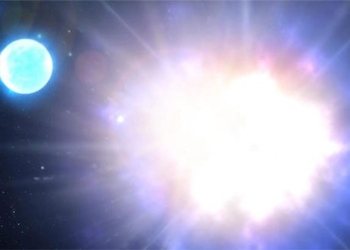Pluto is the farthest planet in the solar system and also the smallest planet. According to recent observations by NASA, there are up to 3 moons (not just 1) orbiting this planet.  Using the Hubble Space Telescope for observations, astronomers discovered two additional moons orbiting Pluto last May. If these discoveries are recognized by the International Astronomical Union, the two moons will be named after Greek mythology and will be associated with Charon, the moon considered to be the only one of Pluto, which was discovered in 1978. For now, the two newly discovered moons are referred to as S/2005 P1 and S/2005 P2. Their brightness is about 5,000 times weaker than that of Pluto, which is why they were undetectable for a long time.
Using the Hubble Space Telescope for observations, astronomers discovered two additional moons orbiting Pluto last May. If these discoveries are recognized by the International Astronomical Union, the two moons will be named after Greek mythology and will be associated with Charon, the moon considered to be the only one of Pluto, which was discovered in 1978. For now, the two newly discovered moons are referred to as S/2005 P1 and S/2005 P2. Their brightness is about 5,000 times weaker than that of Pluto, which is why they were undetectable for a long time.
These two moons are located about 44,000 to 53,000 kilometers from Pluto, meaning they are 2 to 3 times farther away than Charon.
In comparing the diameters of the moons, scientists found that Charon has a diameter of approximately 1,200 kilometers, while the diameters of the two new moons are only 32 kilometers and 70 kilometers. Pluto was discovered in 1930, located about 6.4 billion kilometers from the Sun, at the heart of the Kuiper Belt. This region lies within the solar system, extending alongside the orbit of Neptune, at a distance of between 4.5 and 7.5 billion kilometers.
This area is shaped like a ring, composed of more than 35,000 objects with diameters of about over 100 kilometers.





















































